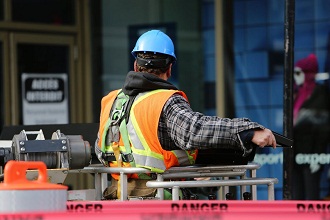UK Construction Surges in Second Quarter of 2018
UK Construction Surges in Second Quarter of 2018

Construction output in the second quarter recovered after a relatively weak start to the year, increasing by 3.3% in the three months to July, according to the Office for National Statistics.
The quarter of stable growth was driven by both repair and maintenance, and all new work, which increased by 5.3% and 2.3% respectively. The three months to July saw construction output increase by £1.34bn. Infrastructure was responsible for the most notable contribution to sector growth – an increase of £414m.
Michael Thirkettle, the chief executive of London-headquartered chartered surveyors McBains, said:
“After the last set of ONS figures showed an upturn following several months of decline, this second successive rise represents another much-needed boost to confidence in the sector . . . Underlying growth remains fragile however, and the real test will be if this can be sustained in the months to come, given the uncertainty over issues like Brexit that have impacted on UK companies’ commitment to new projects over the last two years.”
Echoing Mr Thirkettle’s thoughts about the immediate future, Mark Robinson, the chief executive of Nottingham-headquartered construction company Scape Group, said: “With only six months to go until the UK’s EU exit date, it is absolutely essential that the government does all it can to keep the current optimism going . . . Greater clarity is critical to prevent current confidence waning, and quick and bold decisions now on both long and short-term projects would go some way to continuing this momentum through the remainder of the year.”
Mega-projects will buoy jittery sector
Such fears appear to have been realised in more recent months, with the construction industry slipping back into a slower growth phase in August, new statistics reveal.
Activity in the British construction industry remained above contraction levels for a fifth month running this August, but saw a “loss of momentum” in the rate of output growth. IHS Markit’s PMI measured the sector’s growth at 52.9 in August – down 3 points from a 14 month high of 55.8 in July, but still edging above the 50 mark that separates contraction from expansion.
The results fall substantially below the expectations of economists, who predicted that growth would be down just 1 point from July to 54.9. Analysts nevertheless remain optimistic that the sector will be buoyed in coming months by major ongoing infrastructure projects, including Heathrow Airport’s new terminal and the Crossrail rail network.
Construction investment specialist Max Jones of Lloyds Bank expressed confidence despite the PMI results, stating that “mega-projects like Heathrow, Hinkley Point and HS2 [will] continue to offer quality work for firms right down the supply chain.”
Construction law expert, Paul Brampton of IBB Solicitors, agrees that mega-projects will buoy the sector, but sounds a note of caution about an over-reliance on this aspect of the market:
“Government led mega-projects are great for the companies who reap the benefits, but the main priorities for the vast majority of construction companies in the next 12 months are to access new markets and to boost sales to existing customers. For this they need a strong underlying economy, and access to skills.”
Brampton notes that “construction activity in the housing sector remains solid, and the commercial, leisure and hospitality sectors appear to be showing some signs of recovery”
Employment rates and wages on the rise
Publishers of the survey attribute the fluctuating levels of growth seen in construction this year to the knock-on effects of a false start caused by bad weather this January and February.
Index author Tim Moore held that the slowing growth results were an illustration of “this summer’s catch-up effect starting to unwind after projects were delayed by adverse weather at the start of 2018.”
Respondents however reported feeling that economic and political uncertainty in relation to Brexit was the main factor in slowed growth, holding that the unstable climate has been leading investors to be more cautious. In the eurozone, the PMI has also fallen, corroborating the possibility that a decline in both domestic and export markets could limit growth in UK construction for the rest of 2018.
Nonetheless, some positives were seen for the sector in 2018.
Levels of new work remained steady overall, while employment continued to grow across the sector, maintaining a 2-year high first achieved in July. Statistics show that wages for construction workers have also continued to rise in the wake of Brexit, with an 11% average increase in pay since the referendum in June 2016.
Moore said that this “strong upturn in staff recruitment” presented an “encouraging takeaway” from August’s results, adding that respondents had generally expressed confidence that their businesses would achieve organic growth over the next year.
Paul Brampton of IBB Solicitors adds:
“I am really encouraged by these signs. At the same time the industry needs to remain focussed on how it can improve its image and attractiveness to potential employees. It must also begin to look at how it can improve productivity to to help protect itself against the potential for labour shortages in the future.”
Contact our construction and engineering legal experts today
For more information construction and engineering legal matters, construction and engineering dispute resolution, project advice, procurement and standard construction and engineering contracts please contact Paul Brampton or another member of our construction and engineering team via email on construction@ibblaw.co.uk or call 03456 381381. Alternatively please visit https://www.ibblaw.co.uk/service/construction-and-engineering.
